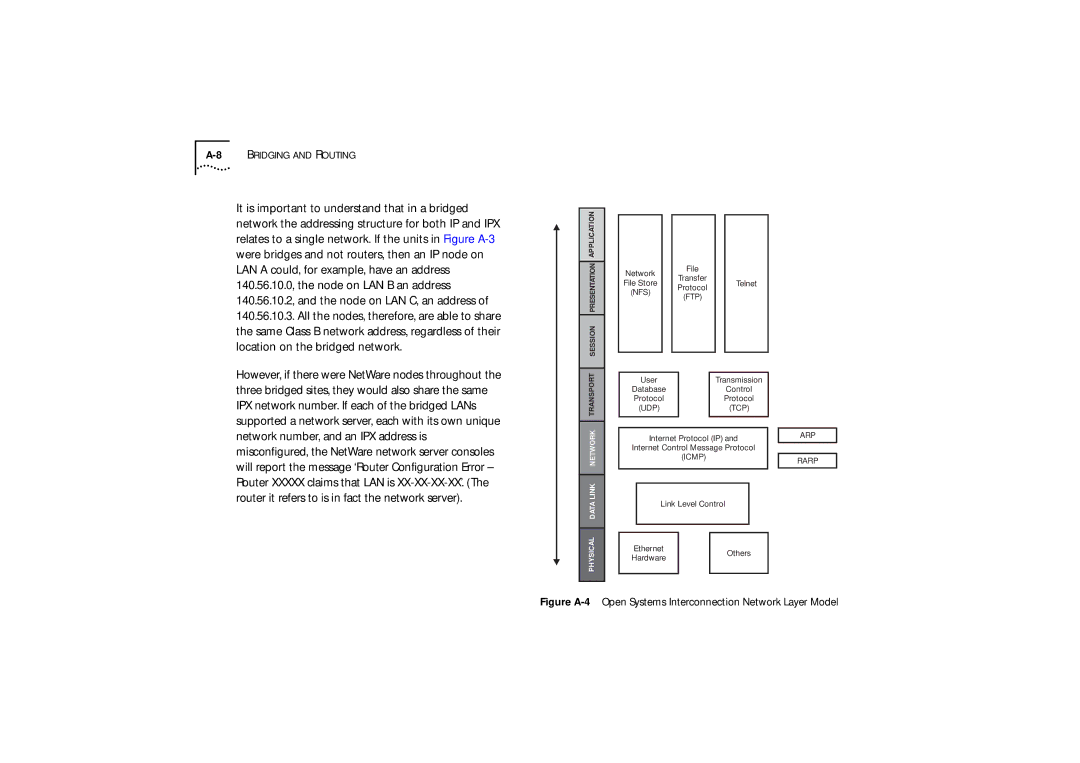
It is important to understand that in a bridged network the addressing structure for both IP and IPX relates to a single network. If the units in Figure
140.56.10.3.All the nodes, therefore, are able to share the same Class B network address, regardless of their location on the bridged network.
However, if there were NetWare nodes throughout the three bridged sites, they would also share the same IPX network number. If each of the bridged LANs supported a network server, each with its own unique network number, and an IPX address is misconfigured, the NetWare network server consoles will report the message ‘Router Configuration Error – Router XXXXX claims that LAN is
APPLICATION |
PRESENTATION |
SESSION |
TRANSPORT |
NETWORK |
DATALINK |
PHYSICAL |
Network |
| File |
|
|
| Transfer |
|
| |
File Store |
|
| Telnet | |
| Protocol |
| ||
(NFS) |
|
|
| |
| (FTP) |
|
| |
|
|
|
| |
|
|
|
|
|
User |
| Transmission |
Database |
| Control |
Protocol |
| Protocol |
(UDP) |
| (TCP) |
|
|
|
Internet Protocol (IP) and
Internet Control Message Protocol
(ICMP)
Link Level Control
Ethernet |
| Others |
Hardware |
| |
|
| |
|
|
|
ARP
RARP
